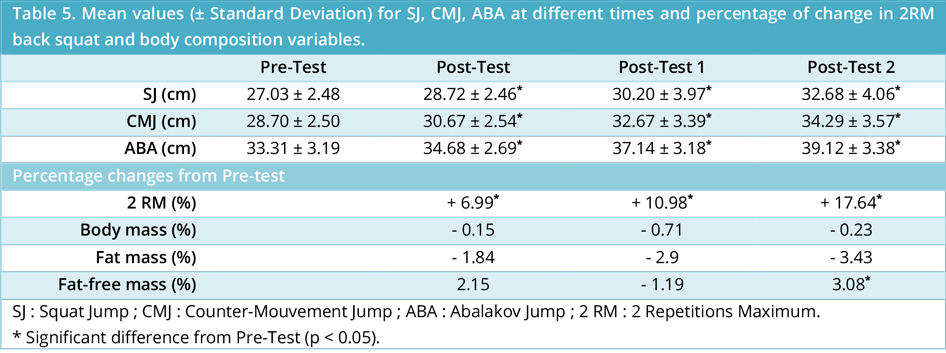
Volleyball is a sport of opposition that requires intermittent efforts ranging from brief and high-intensity periods to periods of low intensity. During the actions, the players make a lot of jumps whether in attack or in defense. For this, the physical qualities of strength, speed, power and agility are required. Could specific resistance training be beneficial to performance in volleyball ?
The study published in June 2011 by a team of researchers from the University of Castilla-La Mancha in Spain attempted to answer this question. They studied the influence of a linear periodization of resistance training on the evolution of the performance during various vertical jumps, the force in back squat and the composition of body in 10 high-level players of volleyball before and during a competitive season, for a total duration of 24 weeks.
Linear periodization consisted of 4 phases :
Four test sessions were organized to monitor the results : Pre-Test, at the beginning of the season ; Post-test, 4 weeks after the start of training ; Post-Test 1, 8 weeks after the start of training and just before the start of the competitive season ; and Post-Test 2, at the end of the training and the competitive season. The planning for this follow-up is shown in Figure 1 :

Figure 1. Linear periodization during 24 weeks, combining the pre-season and the competitive season.
During each test session, the players performed the same day in the same order :
These periods of resistance training and testing were added to the training program. Resistance training accounted for 25 to 33% of total training. Using the data collected, the researchers compared the results of each test session and highlighted the performance of the players over the course of the season.
The main result of this study is the significant increase in vertical jumps and maximum strength performance during the season in comparison to the Pre-Test session. In addition, there was a significant change in the body composition of the players. Between Pre-Test and Post-Test 2, they lost on average 3.43% fat and gained about 3.08% of fat-free mass, while their body weight did not change significantly. The results of the 4 test sessions are presented below in Table 5 :

The gains obtained in pre-season may be due to the inactivity of the players before the pre-season. Nevertheless, during the competitive season, the gains in the various tests were confirmed. While in general, the role of resistance training is to maintain the gains obtained in pre-season, this study shows that a specific and adapted training can maintain but also improve performance and body composition of female volleyball players.
Despite improvements in vertical jump performance (SJ, CMJ, and ABA), maximum strength (2RM), and body composition, the authors of this study found no significant correlations between physical performance and anthropometric changes. Based on their data, they concluded that the gains in strength and power observed may be partly due to neural rather than muscular adaptations, and that this depended on the individual response of each individual to the stimulus of training.
This study shows that a linear periodization of resistance training during a competitive season of volleyball would allow performance gains in vertical jumps, strength, and improve body composition. This is a model applicable to any volleyball team. However, the authors of this study make it clear that it is difficult to speculate and project these results for other teams. Would the results be observable on a men's team, on younger athletes or for another discipline than volleyball ? Finally, the authors cannot say whether linear periodization is the best type of periodization and whether the different periods chosen are optimal in terms of time or organization.
We remind you that you can quote articles by limiting your quotation to 200 words maximum and you must include a nominative link to this one. Any other use, especially copying in full on forum, website or any other content, is strictly prohibited. In doubt, contact us.
Copyright © 2011-2024 - www.sci-sport.com - All rights reserved